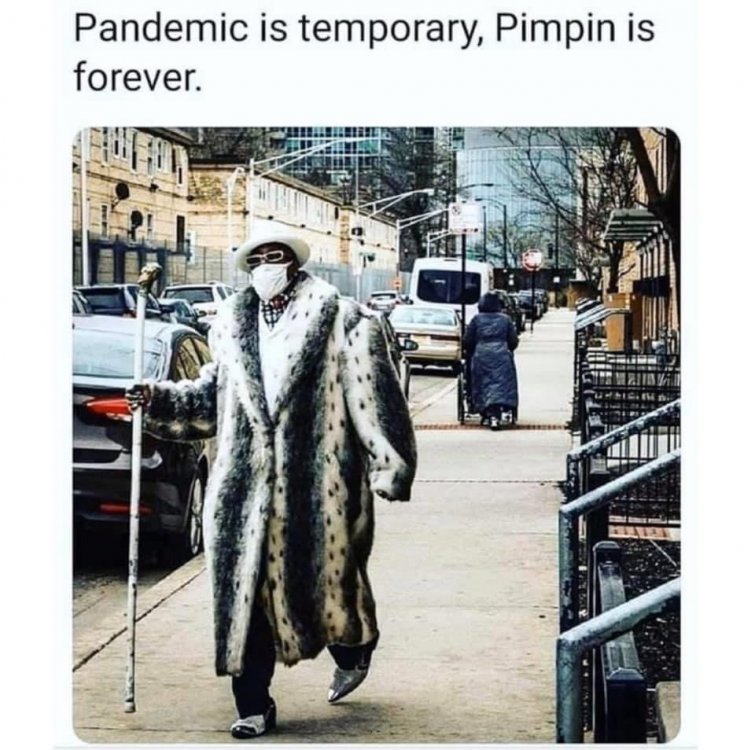Leaderboard
Popular Content
Showing content with the highest reputation on 04/22/2020 in all areas
-
I mentioned this in the other thread. Here are a couple of updates from the state. If this holds up, it will be hard to justify starting sports as usual. https://in.chalkbeat.org/2020/4/21/21230499/even-after-indiana-schools-reopen-it-could-take-time-to-get-back-to-normal-mccormick-says https://wsbt.com/news/local/indiana-department-of-education-discusses-plans-for-the-future-of-schooling Again, I want football and all sports to come back ASAP. But they will take a back seat when it comes to how the state is deciding for schools to proceed at the start of the next school year, which could potentially be after Labor Day.3 points
-
I totally agree with you, but we need to mitigate all risks! I scoffed at this initially, but this really is a big deal, stay safe!2 points
-
2 points
-
George will be fine. Hopefully his brother Yanni will also be wearing old gold and black sometime soon.1 point
-
1 point
-
IMHO - If you are scared - stay home. If not, go ahead and work.1 point
-
No.. I wasn't moving the goal posts. I was calling you out on your hypocrisy. You were calling out Joe Biden for stuff but yet Trump has done worse and you support him... Thats being a hypocrite and down right ignorant. Joe Biden killed the Bork vote. Biden was in the Senate when RGB was put on SCOTUS, He voted no on Clarence Thomas. He was the one that pressed Obama to legalize Gay Marriage and he worked his tail off on getting ACA through. I know with Joe Biden.. Our healthcare will get even more expanded, with Joe Biden he will put SCOTUS that will be qualified, that will make sure that gay marriage and roe v wade will be protected. I know with Joe Biden. Our Allies won't be let down or disrespected...and I know he will be the voice of all of us.. Just not the one's who vote for him...and Hell treat all 50 states with respect.. Even the ones that have R governors. President Obama from what it seems wanted to remain neutral in the race and he would endorse the eventual nominee. (I listen to podcasts and read articles) Obama actually wanted Joe to run in 2016 but with Beau Biden's death a year before.. Biden didn't want to. Its obvious President Obama wanted Biden to win Mayor Pete and Amy Klobuchar dropped out around two days after SC primary. Biden got 2nd in Nevada and then killed it in South Carolina. Mayor Pete and Amy Klobuchar struggled bad in SC and were gonna struggle in states coming up (their pulling data showed that) and it was kinda easy to see Biden's campaign after 2 strong showings was gonna start to roll. You did bring up Hunter Biden. You said Biden is too busy protecting his son...and what's that sons name?1 point
-
Perhaps you’d like to see what the professionals have to say about this. Not in a press conference. Not with a political agenda. Just doctor to doctor. My wife sent this to me. She’s a nurse practitioner and head of infection control at a Chicago Hospital. https://www.practiceupdate.com/c/b5bf643b-c8c2-4989-a214-ba428701ad73?elsca1=soc_share-this-email&elsca2=social&elsca3=email Published in Gastroenterology and 11 other channels Expert Opinion / Commentary · April 21, 2020 COVID-19 – A Glimpse Into the Future Written by Jonathan Temte MD, PhD How can we see into the future? The simple answer is that we can’t. We are left only with guesses as to what may be. Some of these are educated and informed; others are wild speculation. It is the former that I will focus on today; informed predictions of what may happen with the global pandemic of COVID-19 in the coming weeks and months. At present, we have no vaccines for SARS-CoV-2 and no evidence-based therapeutics for COVID-19. What we do have are public health measures, such as “social distancing,” for prevention and medical interventions consisting of supportive care. Leveraging our public health tools, however, buys time for the development and testing of vaccines and therapeutics. A very thoughtful and thorough projection is available, based on sophisticated modelling by Kissler and colleagues.1 Their efforts take into account the possible contributions of seasonality, duration of immunity, and cross-protection imparted by prior infection with the two other betacoronaviruses in common circulation (HKU1 and OC43). Then, they provide a variety of scenarios that simultaneously assess the effects of the length (4 weeks to indefinite) and strength (0–60% reductions in Ro) of social distancing. First some basics: Seasonal coronaviruses are seasonal; they circulated primarily in the late autumn, winter and early spring months in temperate regions; Immunity to HKU1 and OC43 wanes fairly rapidly, over the course of about a year; Some cross-protection exists between these two viruses, and perhaps, extends to SARS-CoV-2; Both of these seasonal coronaviruses are less infectious than SARS-CoV-2. The modeling efforts lead to some interesting and some uncomfortable conclusions: SARS-CoV-2 can proliferate at any time of the year (as we are seeing now across the globe); If immunity is not permanent, SARS-CoV-2 will eventually enter into regular circulation as our fifth seasonal coronavirus; If immunity is permanent (or very long-lasting), SARS-CoV-2 could disappear after a few years; High levels of seasonality will lead to a smaller initial peak, but larger wintertime outbreaks; Low levels of cross-protection from OC43 and HKU1 might allow resurgence of SARS-CoV-2 following a period of low activity lasting a few years. When social distancing is added without seasonality, the following scenarios emerge: Short durations of social distancing do little more than displace the cases into the near future; Longer durations of higher-intensity social distancing effectively reduce case burden in the near term, but result in significant outbreaks during autumn and winter; Permanent social distancing of moderate to high intensity works well to keep SARS-CoV-2 at bay (but would be unpalatable to almost all of us). Finally, and what I think are the most likely projections, are of those with social distancing added into a seasonal world: Short durations of social distancing slightly delay the peaks of COVID-19, but result in high overall infection rates; Longer durations of social distancing push the peaks into the winter months and increase the overall infection rate; Intermittent social distancing, based on good surveillance, may be needed to keep case load in check until vaccines are available or a sufficient percentage of the population has been infected, become immune, and herd effects take over. I suspect our best choices here require a Faustian deal, buying time now at the expense of a future catastrophe, in the hope that effective therapeutics and vaccines become available and that critical data emerge regarding the extent of population immunity, duration of immunity, and its rate of decline. Perhaps the last and best words for COVID-19 predictions are those of Ebenezer Scrooge, “Are these the shadows of the things that Will be, or are they shadows of things that May be?”2 Only time will tell.1 point
-
I have no doubt your thought process is a well-considered one. It just doesn’t come off that way sometimes due to the phraseology. When you use all those catch phrases, it’s just too easy to assume you’re the conservative equivalent of a “libtard,” and dismiss your point of view without considering it.1 point
-
Here’s some well-intentioned free advice. Like most free advice, it may be worth no more than what you paid for it.😜 You have a legitimate point of view on these and other issues, and it adds to the open discussion that makes the GID worthwhile. But when your posts are continually laced with Limbaugh/Hannity/FoxNews conservative-speak, e.g., “libtards,” “liberal mainstream media,” “fake news,” it makes it way too easy for those of an opposing viewpoint to dismiss your points as being made by a “right-wing nut.” If you actually want people to take your views seriously, consider making the points without the meaningless rhetoric as a side-dressing. Of course, if being taken seriously is not one of your objectives, as opposed to just venting after a few beers without actually saying anything of substance, have at it. As I said, just some well-intentioned advice.1 point
-
1 point
-
https://www.indystar.com/story/sports/high-school/2020/04/13/indiana-schools-light-up-north-central-ad-paul-loggan-who-died-coronavirus/2986759001/?fbclid=IwAR0a1fwW6LRp89VtOhJRsjgLRtY8Agmq80Ni2JKOLvPHXNkjZUBC89YPNng Incredible tribute.1 point
-
OPEC + They certainly want the control back from the US.......and are willing to sell at a loss to get it back...... https://www.investopedia.com/articles/investing/081315/opec-vs-us-who-controls-oil-prices.asp OPEC vs. the United States: Who Controls Oil Prices? Up until the middle of the 20th century, the United States of America (U.S.A) was the largest producer of oil and controlled oil prices. In the years to follow, OPEC controlled the oil markets and prices for most of the latter part of the 20th century. However, with the discovery of shale oil in the U.S.A and advances in drilling techniques, America has re-emerged as a top producer of oil. In this article, we explore the historical battle between OPEC and the United States of America to control oil prices and how world events have influenced that struggle.1 KEY TAKEAWAYS As of 2019, OPEC controlled roughly 75% of the world's total crude oil reserves and produced 42% of the world's total crude oil output. However, the U.S. was the world's largest oil-producing country in 2019 with more than 12 million barrels per day. Although OPEC still has the ability to drive prices, the U.S. has limited the cartel's pricing power by ramping up production whenever OPEC cuts its output. United States Oil was first commercially extracted and put to use in the United States of America. Consequently, pricing power for the fossil fuel lay with the U.S.A which was, at that time, the largest producer of oil in the world. In general, oil prices were volatile and high during the early years because economies of scale during extraction and refining (which mark the current extraction and drilling processes) were not present. 1For example, in the early 1860s, according to the Business Insider, the price per barrel of oil reached a peak of US $120 in today's terms, partly due to rising demand resulting from the U.S. civil war. The price fell by more than 60% over the next five years and rose by 50% during the next five years.2 In 1901, the discovery of the Spindletop refinery in eastern Texas opened the floodgates of oil in the U.S. economy.3 It's estimated that 1,500 oil companies were chartered within a year of the discovery. Increased supply and the introduction of specialized pipelines helped further reduce the price of oil. 4The supply and demand for oil rose additionally with the discovery of oil in Persia (present-day Iran) in 1908 and Saudi Arabia during the 1930s.56 By the mid-twentieth century, the use of oil in weaponry and the subsequent European coal shortage further ratcheted demand for oil, and prices came crashing down to $40 in today's terms.78 American reliance on imported oil began during the Vietnam war and the economic boom period of the 1950s and 1960s. In turn, this provided Arab countries and OPEC, which had been formed in 1960, with increased leverage to influence oil prices.1 OPEC OPEC, or the Organization of the Petroleum Exporting Countries, was formed to negotiate matters concerning oil prices and production. As of April 2020, OPEC countries included the following 13 nations:9 Algeria Angola Congo Equatorial Guinea Gabon Iran Iraq Kuwait Libya Nigeria Saudi Arabia United Arab Emirates Venezuela The 1973 oil shock swung the pendulum in OPEC's favor. That year, in response to America's support for Israel during the Yom Kippur War, OPEC and Iran stopped oil supplies to the United States. The crisis had far-reaching effects on oil prices. 10 OPEC controls oil prices through its pricing-over-volume strategy. According to Foreign Affairs magazine, the oil embargo shifted the structure of the oil market from a buyer's to a seller's market. In the magazine's view, the oil market was earlier controlled by the Seven Sisters, or seven western oil companies, that operated a majority of the oil fields. Post-1973, however, the balance of power shifted towards the countries that comprise OPEC. According to them, “what the Americans import from the Persian Gulf is not so much the actual black liquid but its price.11” A number of world events have helped OPEC maintain control over oil prices. The fall of the Soviet Union in 1991 and the resulting economic tumult disrupted Russia's production for several years. 12The Asian financial crisis, which had several currency devaluations, had the opposite effect in that it reduced oil demand.13 In both instances, OPEC maintained a constant rate of oil production. As of 2019, OPEC controlled 74.9% of the world's total crude oil reserves and produced 42% of the world's total crude oil output.1415 OPEC+ came into existence in late 2016 as a means for the top oil exporting nations to exert control over the price of the precious commodity. Essentially, OPEC+ is an amalgamation of OPEC and high oil exporting non-OPEC nations like Russia and Kazakhstan.16 Combined, they control over 50 percent of global oil supplies and about 90 percent of proven oil reserves. OPEC+ remains influential due to three primary factors: An absence of alternative sources equivalent to its dominant position A lack of economically feasible alternatives to crude oil in the energy sector OPEC, especially Saudi Arabia, has the world's lowest barrel production costs. These advantages enable OPEC+ to have a wide-ranging influence over oil prices. Thus, when there is a glut of oil in the world, OPEC+ cuts back on its production quotas. When there is less oil, it increases oil prices to maintain stable levels of production. 17 OPEC vs. the United States—The Future But OPEC's monopoly over oil prices seems to be in danger of slipping. The discovery of shale oil in North America has helped the U.S.A achieve near-record volumes of oil production. According to the Energy Information Administration (EIA), America's oil production was 12 million barrels per day (bpd) in 2019, making them the world's largest oil-producing country.1819 As of December 2019, U.S.A. was the world's top producer followed by Russia and Saudi Arabia. However, Saudi Arabia is still the global leader in exporting oil followed by Russia and Iraq. In fact, these three nations, all members of OPEC+, account for nearly 36% of the supply of oil for the rest of the world. Shale is also gaining popularity beyond American shores. For example, China and Argentina have drilled more than 475 shale wells between them in the last few years. Other countries, such as Poland, Algeria, Australia, and Colombia, are also exploring shale formations. A viable alternative to OPEC+ could shift the power structure. The Iran-U.S. nuclear debate could also impact oil production and supply in the future as further discord could provoke more sanctions to curtail production which would affect prices.20 Other factors that impact the price of oil include the budgets of Arab nations, which need high oil prices to fund government spending programs.21 Also, demand continues to increase from developing economies, such as China and India, further influencing prices in the face of constant production.2223 The dynamics of the oil economy are complex, and the oil price determination process goes beyond the simple market rules of demand and supply, though at its most primal level the market is the final arbiter of the price of oil. Theoretically, oil prices should be a function of supply and demand. When supply and demand increase, prices should drop and vice versa. But the reality is often quite different. Oil's status as the preferred source of energy has complicated its pricing. Demand and supply are only part of the complex equation that has generous elements of geopolitics and environmental concerns. Regions that hold pricing power over oil control vital levers of the world's economy. The United States controlled oil prices for a majority of the previous century, only to cede it to the OPEC countries in the 1970s.1 Recent events, however, have helped to shift some of the pricing power back towards the United States and western oil companies, which led OPEC to form an alliance with Russia et al. to form OPEC+. As oil prices rise, U.S. oil companies pump out more oil to capture higher profits which would limit OPEC's ability to influence the price of oil. Historically, OPEC's production cuts had devastating effects on global economies which has been somewhat diminished recently. Also, the U.S. is one of the world's top consumers of oil, and as production at home increases, there will be less demand for OPEC oil in the U.S. But, it is important to note that, although the United States is the top producing nation, the top exporters are predominantly members of OPEC+, which means that they are still the key player in the oil price determination process. 24There may come a day when OPEC loses its clout but that day is not yet here. Conclusion: Anything the US can do to keep oil production at home will help us against OPEC.......Although SF paid 1.15 per gallon last night......Not gonna complain about that......0 points
This leaderboard is set to Indiana - Indianapolis/GMT-04:00










